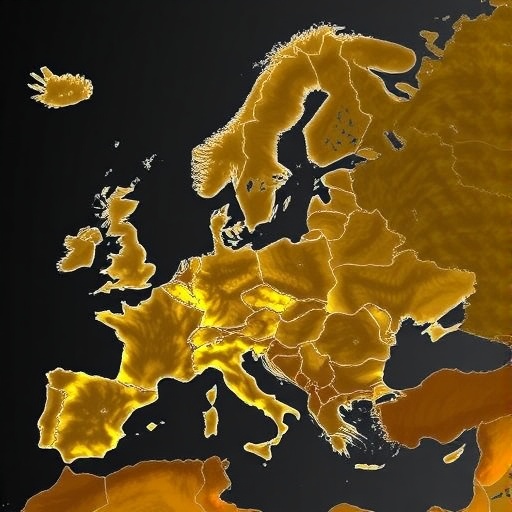Western House Martins and Barn Swallows, common across various European habitats, are aerial insectivores whose migratory patterns expose them to diverse ecological zones. Identifying Sarcocystis halieti in their blood suggests these birds could act as intermediate hosts or transient carriers of the parasite, potentially influencing local transmission dynamics. Migration and feeding behaviors, combined with habitat overlap with definitive hosts such as raptors or scavengers, may facilitate the circulation of Sarcocystis parasites in the environment, raising questions about the parasite’s impact on migratory bird populations and the broader ecosystem.
.adsslot_Ert5p8DWqX{ width:728px !important; height:90px !important; }
@media (max-width:1199px) { .adsslot_Ert5p8DWqX{ width:468px !important; height:60px !important; } }
@media (max-width:767px) { .adsslot_Ert5p8DWqX{ width:320px !important; height:50px !important; } }
ADVERTISEMENT
Meanwhile, the detection of Sarcocystis halieti DNA in the Eurasian Griffon Vulture from Greece adds another layer of complexity. Griffon vultures are obligatory scavengers with an ecological niche that inherently increases their exposure to parasites originating from consumed carcasses. The presence of Sarcocystis in such a high-level scavenger suggests this species could serve as a definitive host, shedding infectious stages into the environment and perpetuating the parasite’s lifecycle. This highlights the ecological interdependence of scavenger and prey species in maintaining parasitic cycles.
The molecular approach used in this study harnessed polymerase chain reaction (PCR) targeting specific genetic markers of Sarcocystis halieti, enabling precise and sensitive detection even in the absence of visible cysts or clinical symptoms in the host birds. This methodology underscores the importance of modern molecular diagnostics in parasitology, which surpass the limitations of conventional microscopy by unveiling cryptic infections and asymptomatic carriers. Such sophisticated tools are essential for comprehensive epidemiological assessments and for devising informed wildlife management strategies.
One of the notable consequences of this research is its contribution to the understanding of parasite-host co-evolution. The apparent ability of Sarcocystis halieti to infect a broad spectrum of birds from different trophic levels points to a flexible host range and adaptability, traits that may facilitate its survival amidst changing environmental conditions. Investigating how parasite genetics and host immune responses co-evolve could elucidate the mechanisms that enable such host versatility and might reveal potential vulnerabilities exploitable for parasite control.
In addition to unveiling new host-parasite interactions, the study calls attention to the geographical spread and epidemiology of Sarcocystis halieti. The detection across diverse regions—Lithuania in Northern Europe and Greece in the Mediterranean—suggests either a widespread endemic presence or emerging distribution influenced by bird migration corridors. This biogeographical insight is pivotal for biosecurity and for predicting the potential spread of infections across continents influenced by global ecological changes.
Highlighting the fast-evolving landscape of molecular parasitology, this study exemplifies how advances in DNA detection techniques are empowering researchers to uncover hidden parasitic interactions that were once obscured by methodological barriers. The ability to detect subtle infections in wildlife amplifies the scope of parasitological research, enabling better monitoring of wildlife diseases that could spill over into domestic animals or even humans, emphasizing a One Health perspective.
The study’s intercontinental scope, incorporating samples from both Northern and Southern Europe, demonstrates the value of collaborative international research in parasitology. Such efforts are crucial for mapping parasite distributions, understanding environmental influences on infection rates, and developing targeted conservation interventions that are sensitive to regional ecological contexts.
Moreover, this research touches upon the intricate ecological web connecting predator and prey species through parasite transmission. By exploiting these connections, Sarcocystis halieti ensures its persistence, illustrating the sophistication of parasitic strategies in navigating multiple host species and ecosystems. Untangling these relationships contributes to ecosystem-based management approaches that consider parasite ecology as a component of biodiversity.
Finally, the study sets a precedent for integrating molecular parasitology into routine wildlife health assessments, reinforcing the need for ongoing surveillance of parasitic infections in wild bird populations. As parasitic diseases can rapidly alter population dynamics and ecosystem functions, their early detection and monitoring are vital for safeguarding biodiversity and supporting resilient ecosystems in an era of unprecedented environmental change.
Subject of Research: Detection and molecular characterization of Sarcocystis halieti DNA in blood samples from various European avian species, elucidating host-parasite relationships and distribution.
Article Title: Detection of Sarcocystis halieti DNA in the Blood of Western House Martin (Delichon urbicum) and Barn Swallow (Hirundo rustica) from Lithuania, and in Eurasian Griffon Vulture (Gyps fulvus) from Greece.
Article References:
Rudaitytė-Lukošienė, E., Palinauskas, V., Markakis, G. et al. Detection of Sarcocystis halieti DNA in the Blood of Western House Martin (Delichon urbicum) and Barn Swallow (Hirundo rustica) from Lithuania, and in Eurasian Griffon Vulture (Gyps fulvus) from Greece. Acta Parasit. 70, 180 (2025). https://doi.org/10.1007/s11686-025-01119-7
Image Credits: AI Generated
Tags: avian blood analysis for parasitesavian parasitology in EuropeBarn Swallow parasitism researchbiodiversity and avian hosts.ecological dynamics of bird healthEurasian Griffon Vulture health implicationshost specificity of avian parasitesimplications for bird conservation effortsmolecular detection techniques in parasitologySarcocystis halieti DNA detection in birdstransmission cycle of Sarcocystis spp.Western House Martin parasite study





